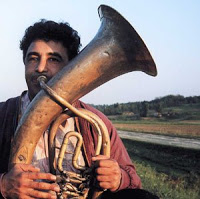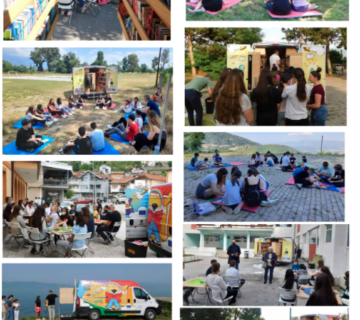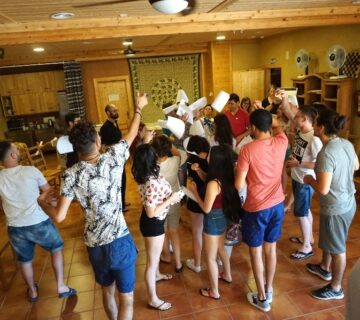In our region, many international artistic and literary festivals fall in the May-June period, which this issue of the magazine covers. Consequently, we devote a special section to information and reflection about the most significant festivals. These events create a space where cultural dialogue among the Balkan countries, as well as between the Balkans and other regions, is condensed and intensified. To the sceptical eye, these gatherings belong to a small world, inhabited by a closed circle composed of a few intellectuals and artists, and so the festivals cannot impact society and remain inconsequential. But these intellectuals and artists still do what they can, believing that, as Venko Andonovski put it in his article in the previous issue, “a single droplet that falls patiently and continuously is stronger than the stone and will one day certainly pulverize that stone”. It is also challenging to answer that age-old question regarding the function of art, and what purpose it serves. Aristotle thought that the value of beauty, and thus also of art, resided precisely in the fact that it serves nothing else, but is a purpose in and of itself. Nonetheless, art can have an “external” usefulness and this was clearly stated by the Slovenian poet and essayist Aleš Debeljak, when he argued some years ago in a literary gathering in Sarajevo that you cannot hate a people if you love their art and literature. So these international festivals, where cultural dialogue deepens and aligns, are the bright side of the Balkans.
But, of course, the Balkans has its dark side too. And one of the darkest aspects of the Balkans, and of Europe in general, is the situation of the Roma: Once slaves, later holocaust victims, then forgotten as such, and finally marginalised and abused up to the present day. André Glucksmann says that the phobia of the Roma is actually a phobia of the self. And not just in the sense of aporophobia. There is also fear of something that we have inside of ourselves, which we suppress and project onto the other, toward the different: “You don’t hate the other, you hate yourself” (Arno Gruen). The history of the treatment of the Roma is highlighted in this issue, in an article by the young activist Ioanida Costache and in an interview with the Roma writer Vasile Ionescu. The Roma’s condition is also part of a wider context: We are all Roma, we are all collectively abused at one moment or another, and indeed we continue to be abused in one or another country just because we are foreigners.
The Balkans is part of Europe in various aspects. Therefore, it seems natural to us to look beyond the regional horizon and to include contributions of authors from across our entire continent. In his article, Jean-Patrick Connerade, President of the European Academy of Sciences, Arts and Letters, sketches out a provocative utopia, proposing the “balkanisation” of Europe, advocating for a constellation of small communities. Whereas Ágnes Heller, one of the most powerful philosophical minds of our times, explores a series of historical and contemporary reflections on cosmopolitanism and identity, in a two-part essay, in this issue and the next one to come. Andrew Finkel, a British journalist who lives in Istanbul since decades, is another contributor in The Gaze of the Other: His article presents Turkey as a case study by which to explore the media’s role in society and press freedom as a function of a democratic culture.
We also especially recommend to our readers the article by Nadezhda Alexandrova in the Forum, titled “New Janissaries, old refrains”, in which she analyses how the past and present are interwoven in the collective imagination, and how mental constructs of the present assimilate and recycle patterns from the past. In Loc-alia, the reader will find an article by Kostas Peroulis, where the mutations of the family and society are analyzed through a cinematographic phenomenon. What more? The issue is completed by poetry from Lindita Ahmeti and Gradimir Gojer, in Ars Poetica, two voices from different generations, using the same language of the singular universal, while that which is unique, as well as common, in their artistry is found far deeper than the difference between the generations or their historic and geographic circumstances. The works of the painters Bedri Baykam and Bijlana Djurdjevic are presented in Visible Soul: oniric imagination and uses multiple materials in the first, while the second engages with the topic of man’s alienation in the modern world. Lastly, we have an essay from Ardian Vehbiu, on the relationship between artistic tradition and social and technological innovation, written, as always in his case, with much wit and elegance.
Translated by Alexandra Channer





